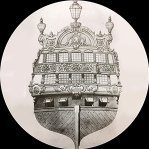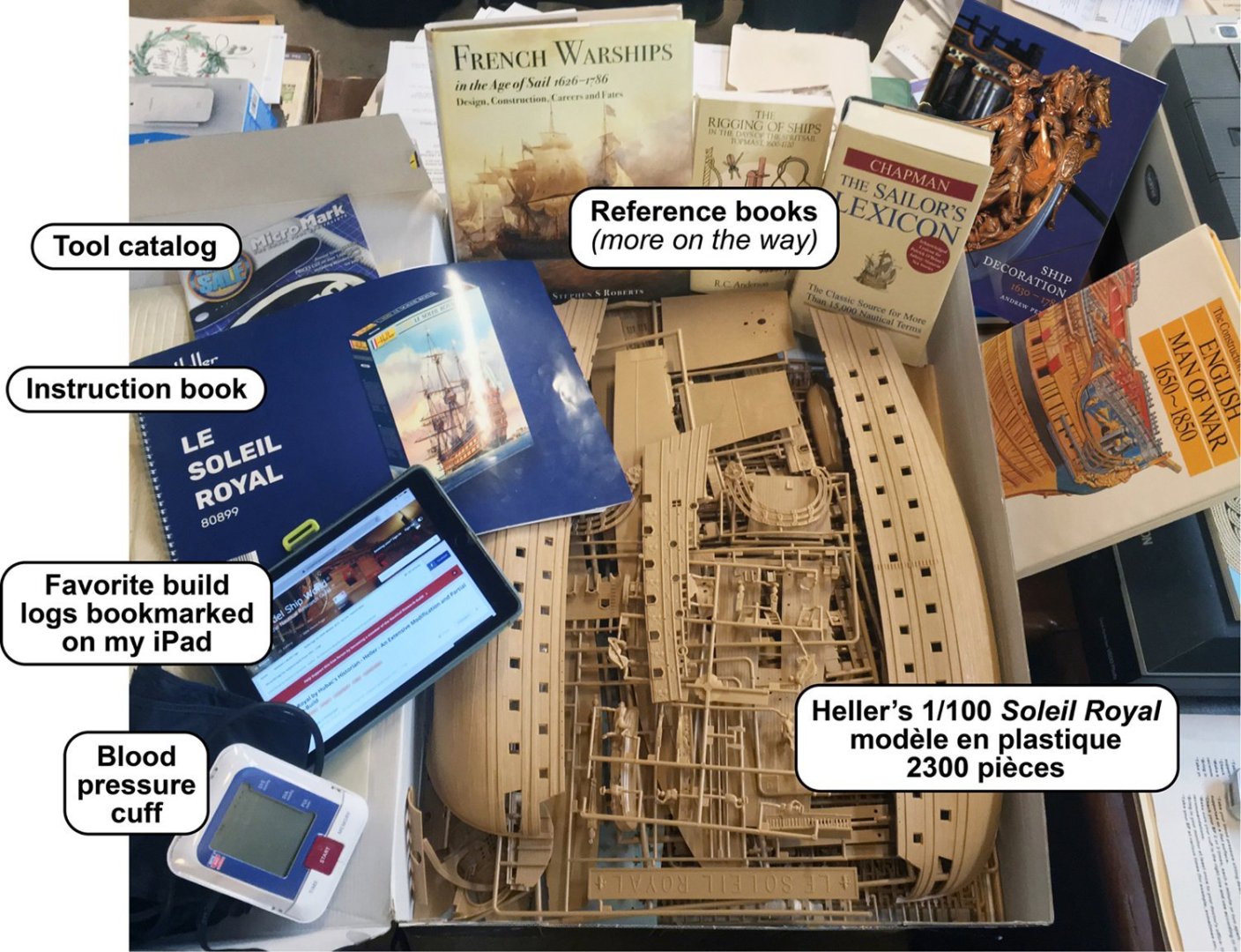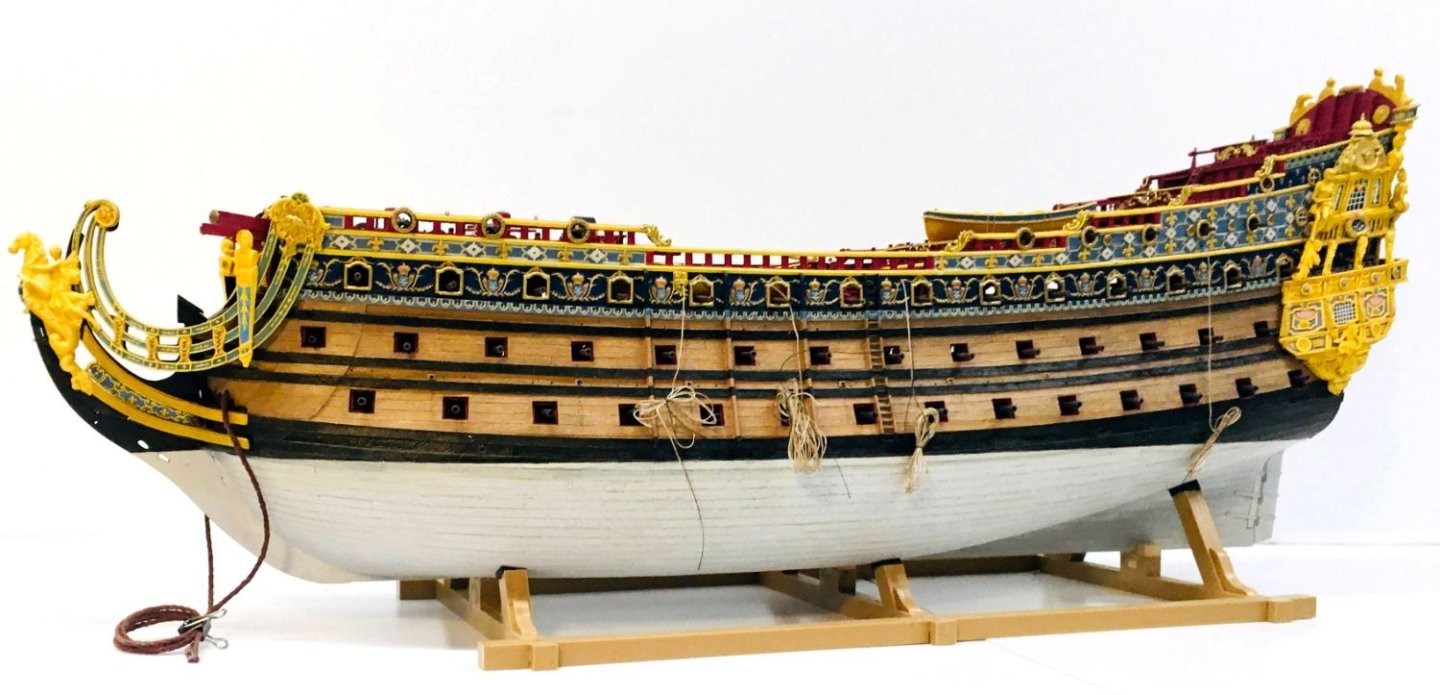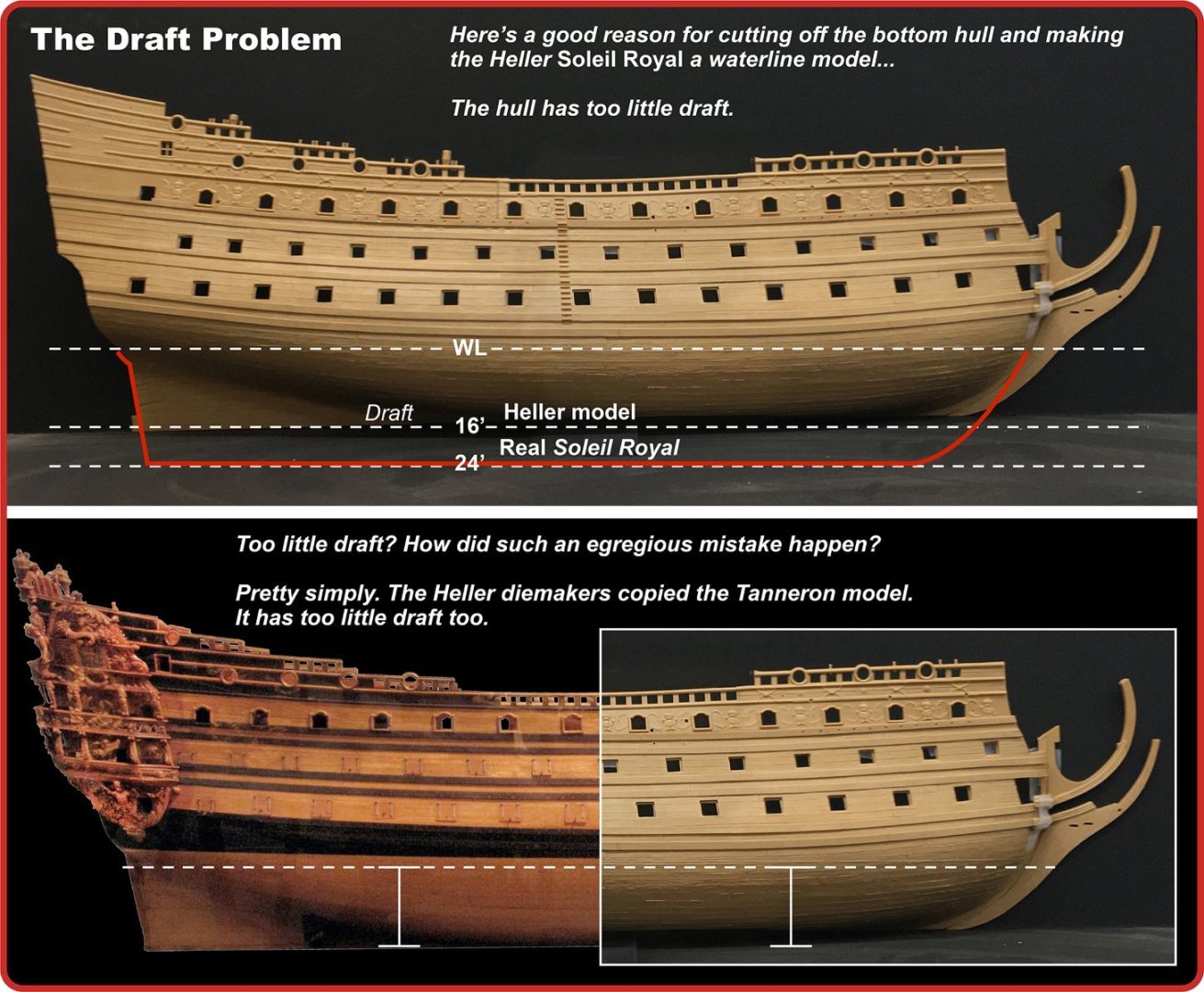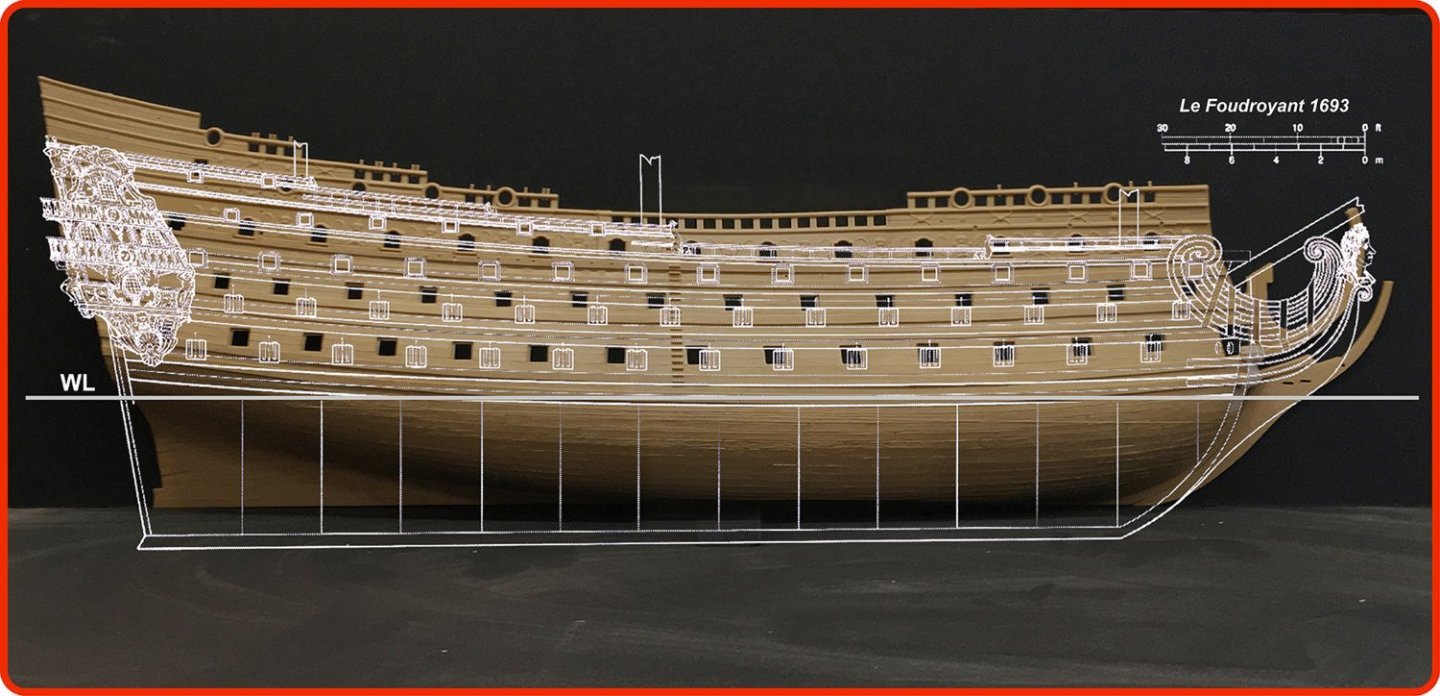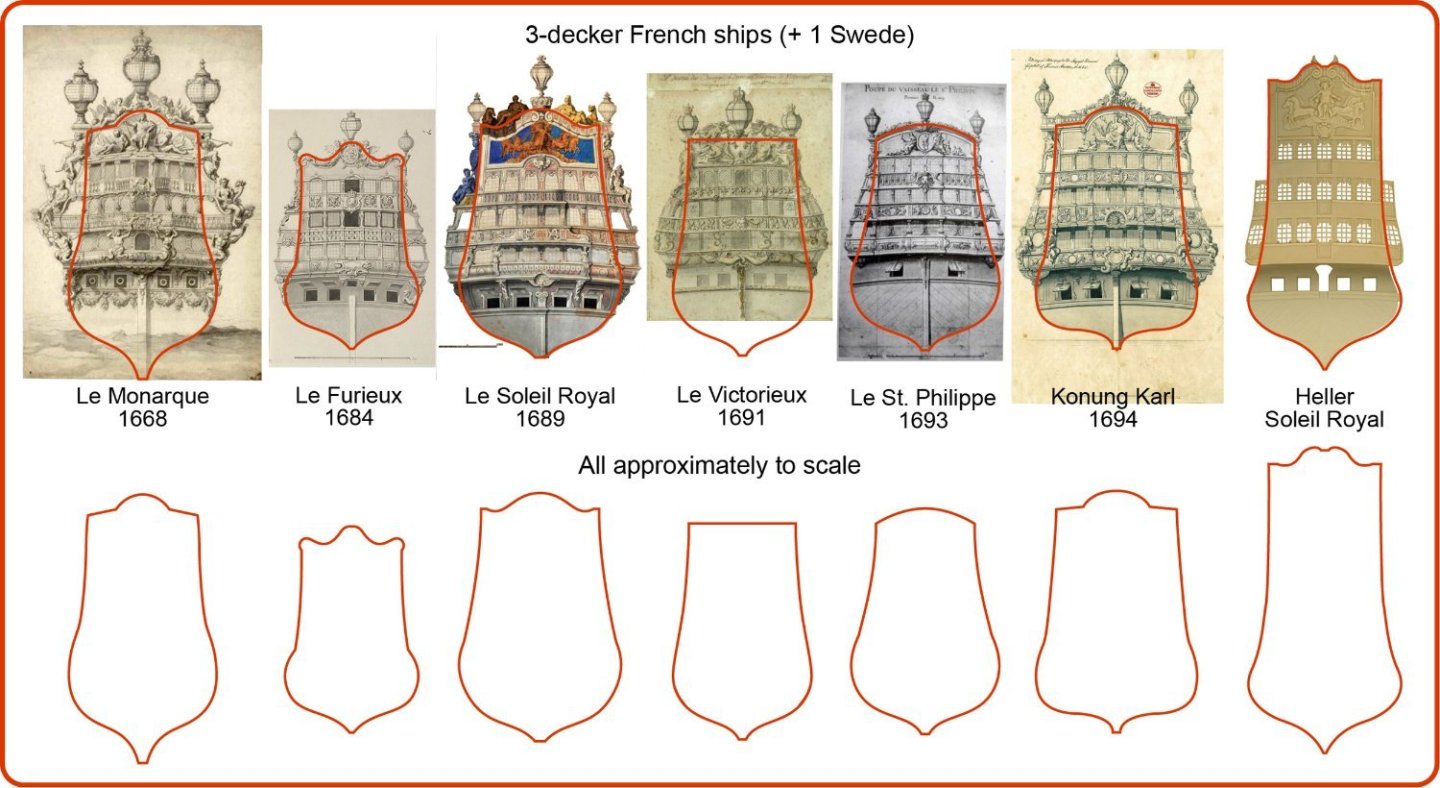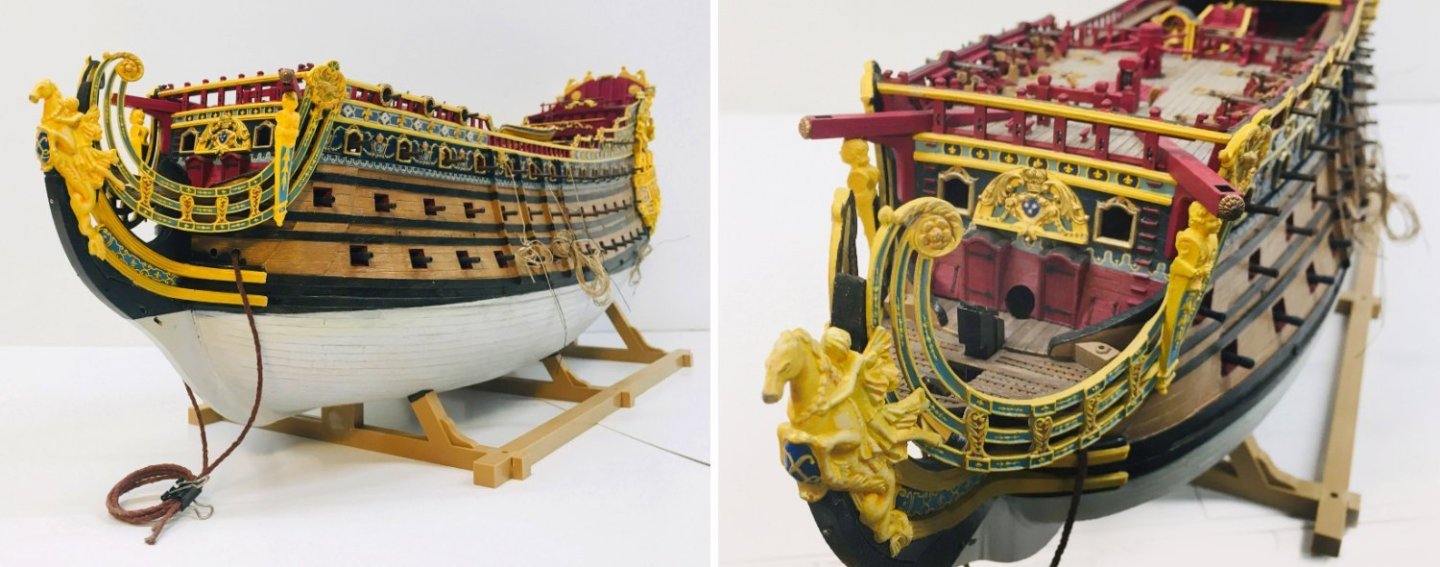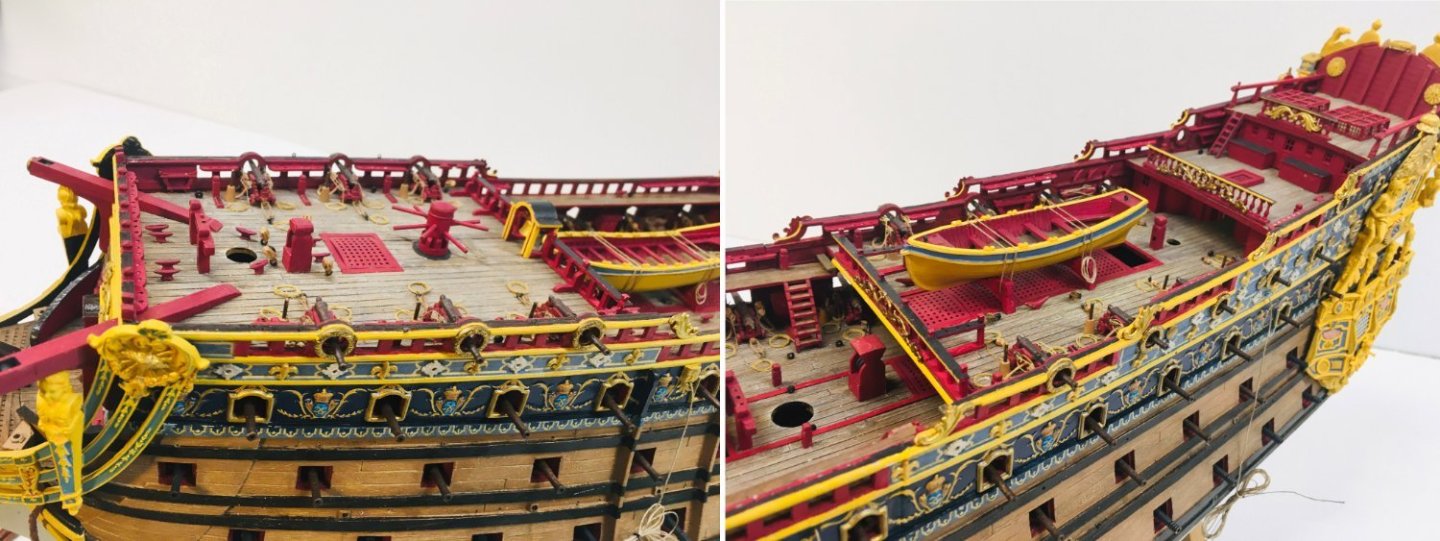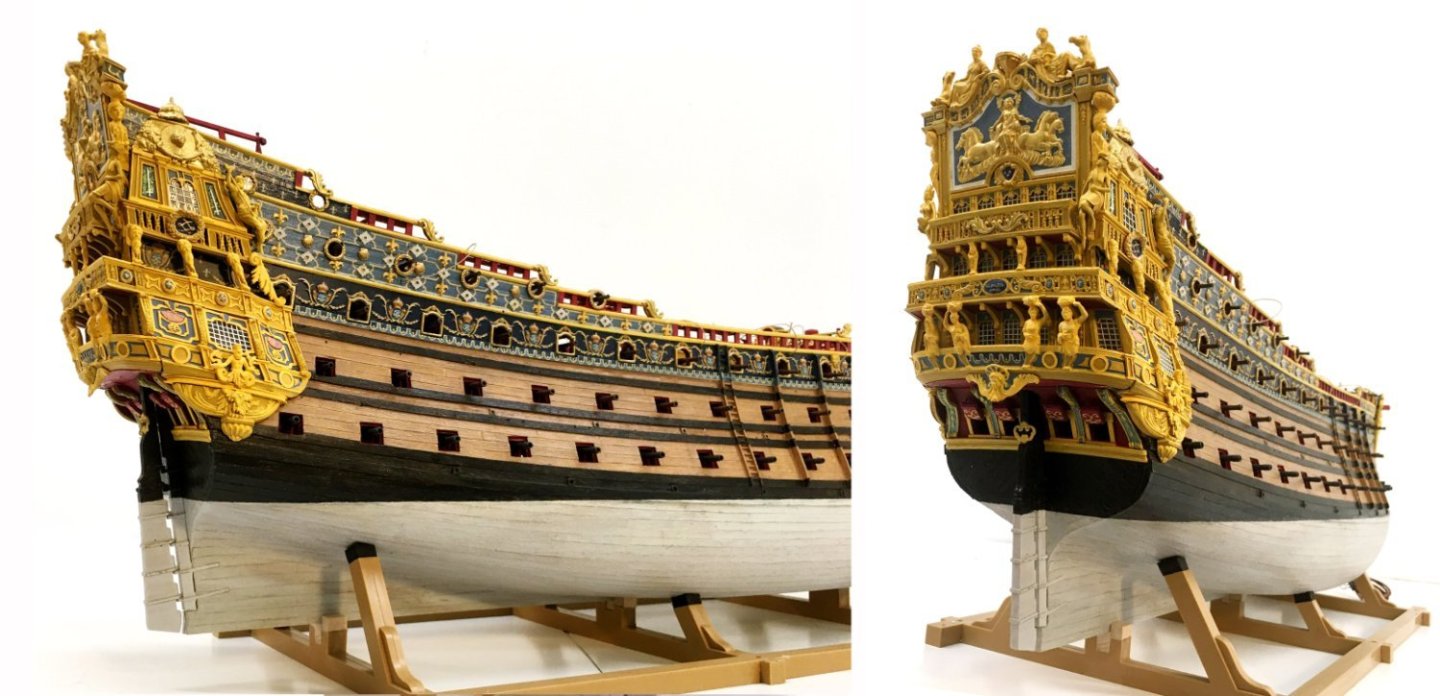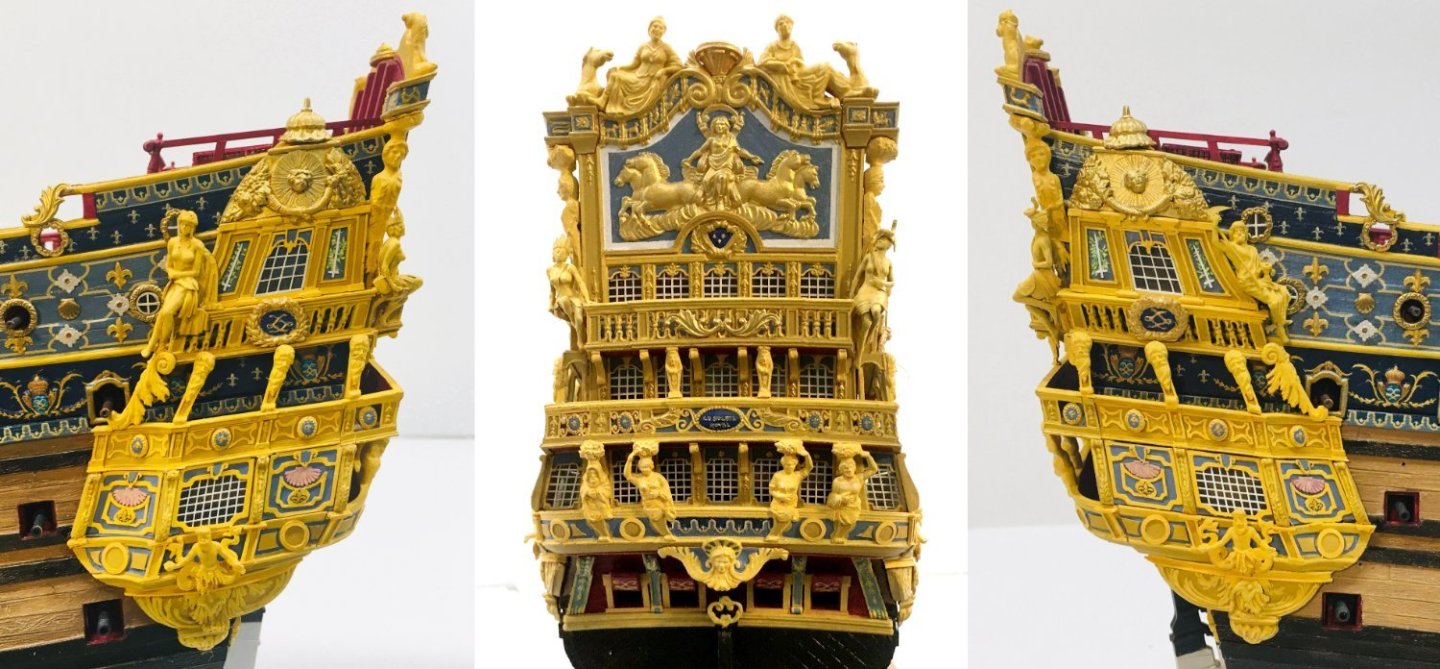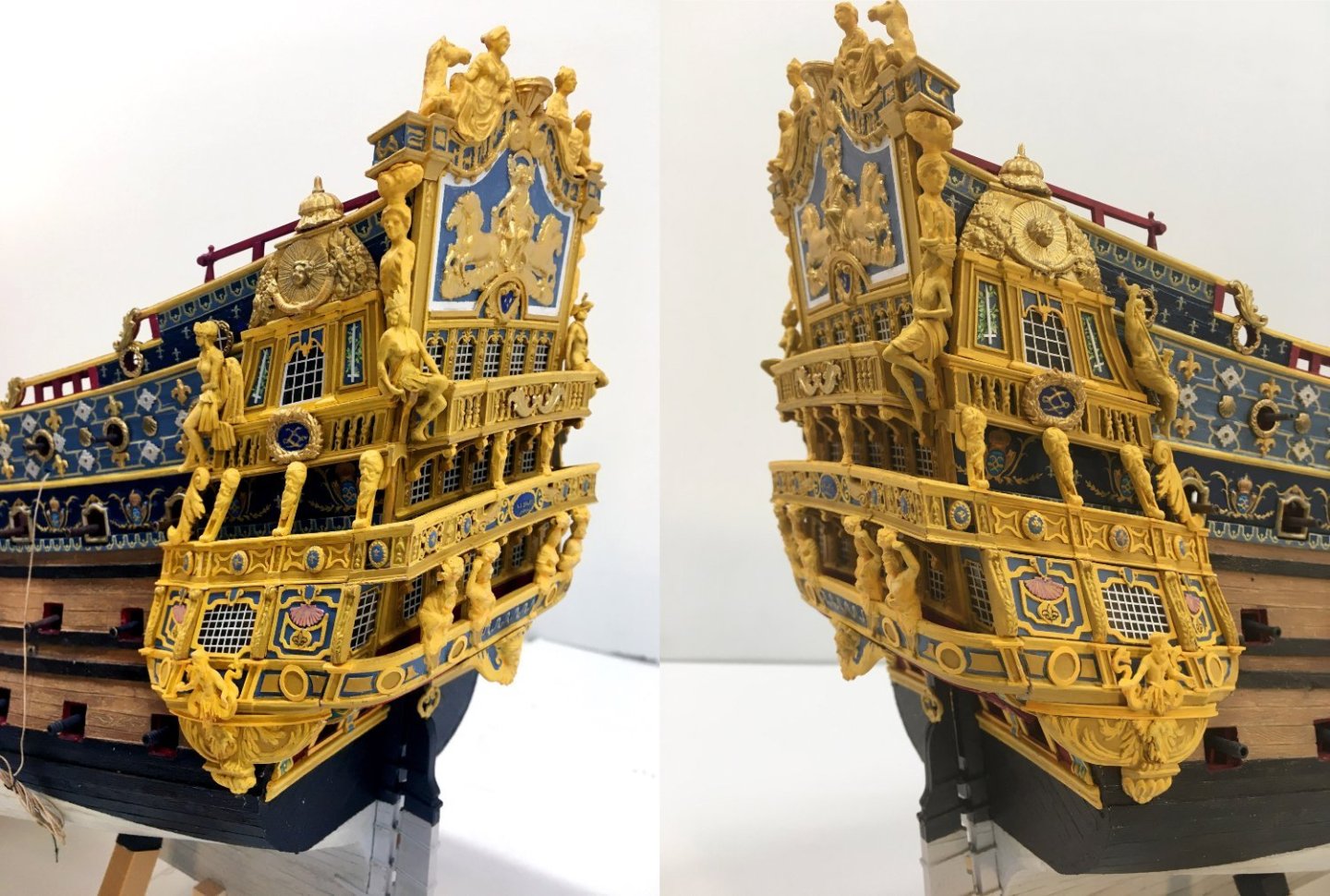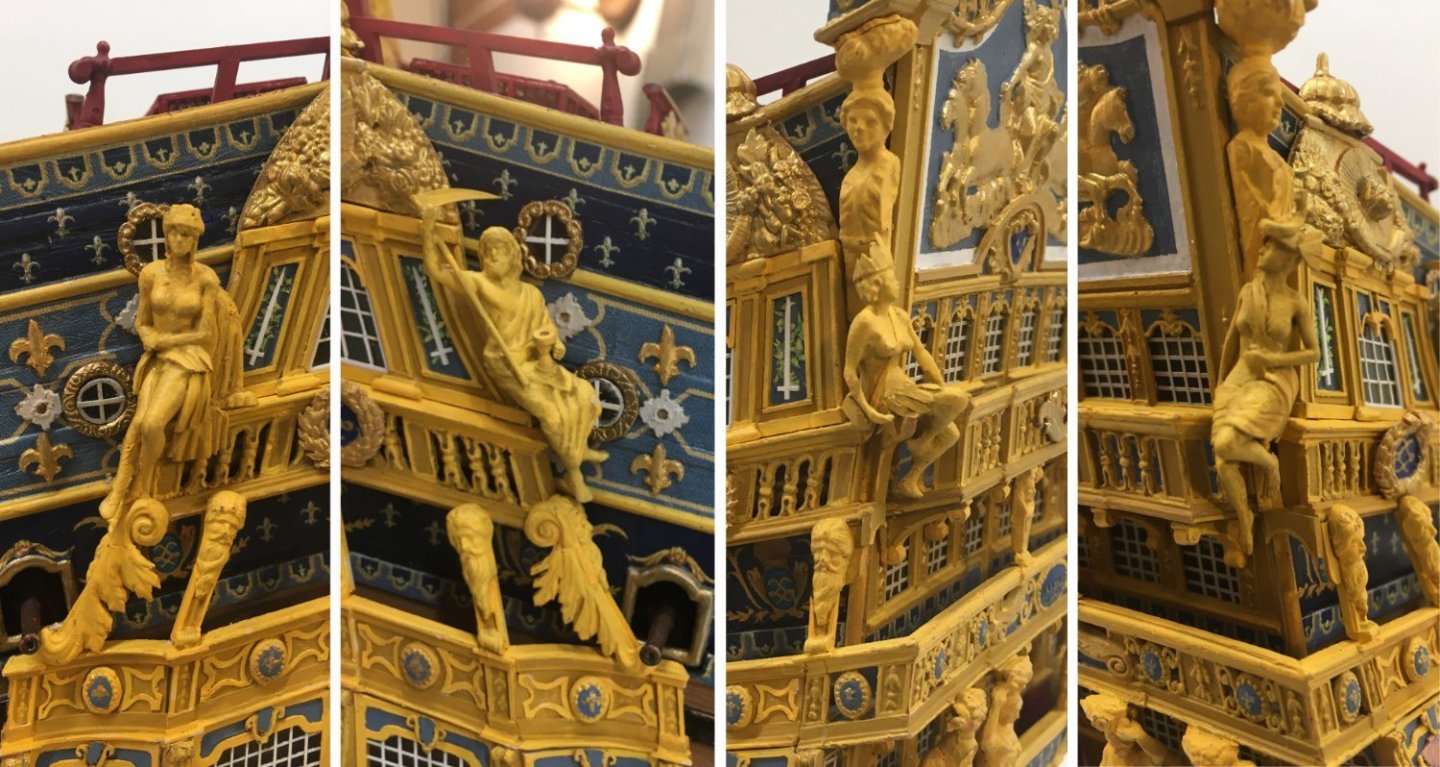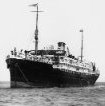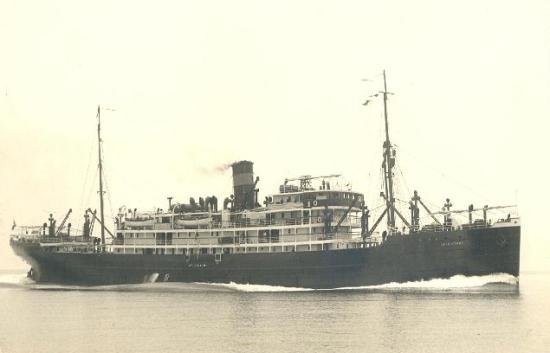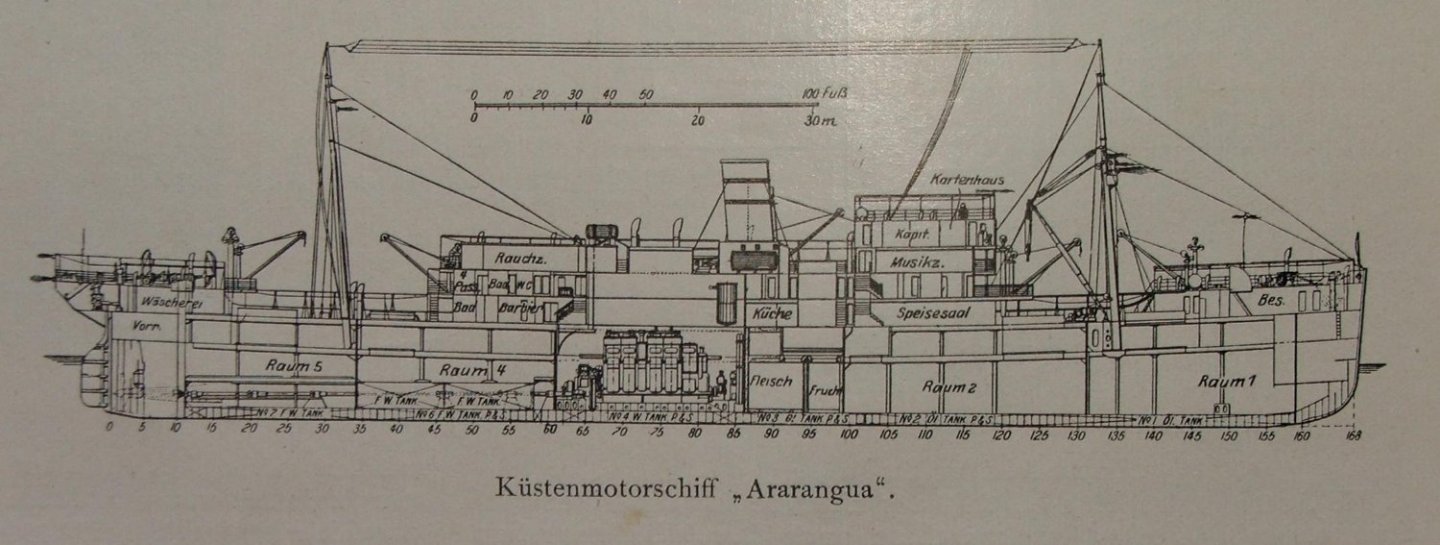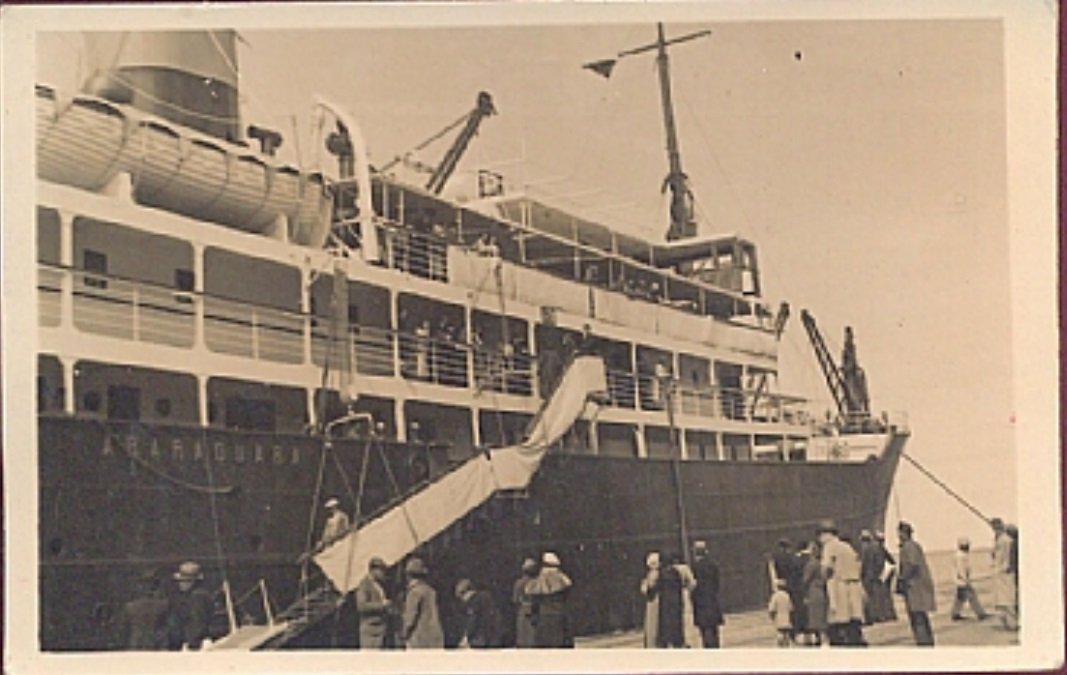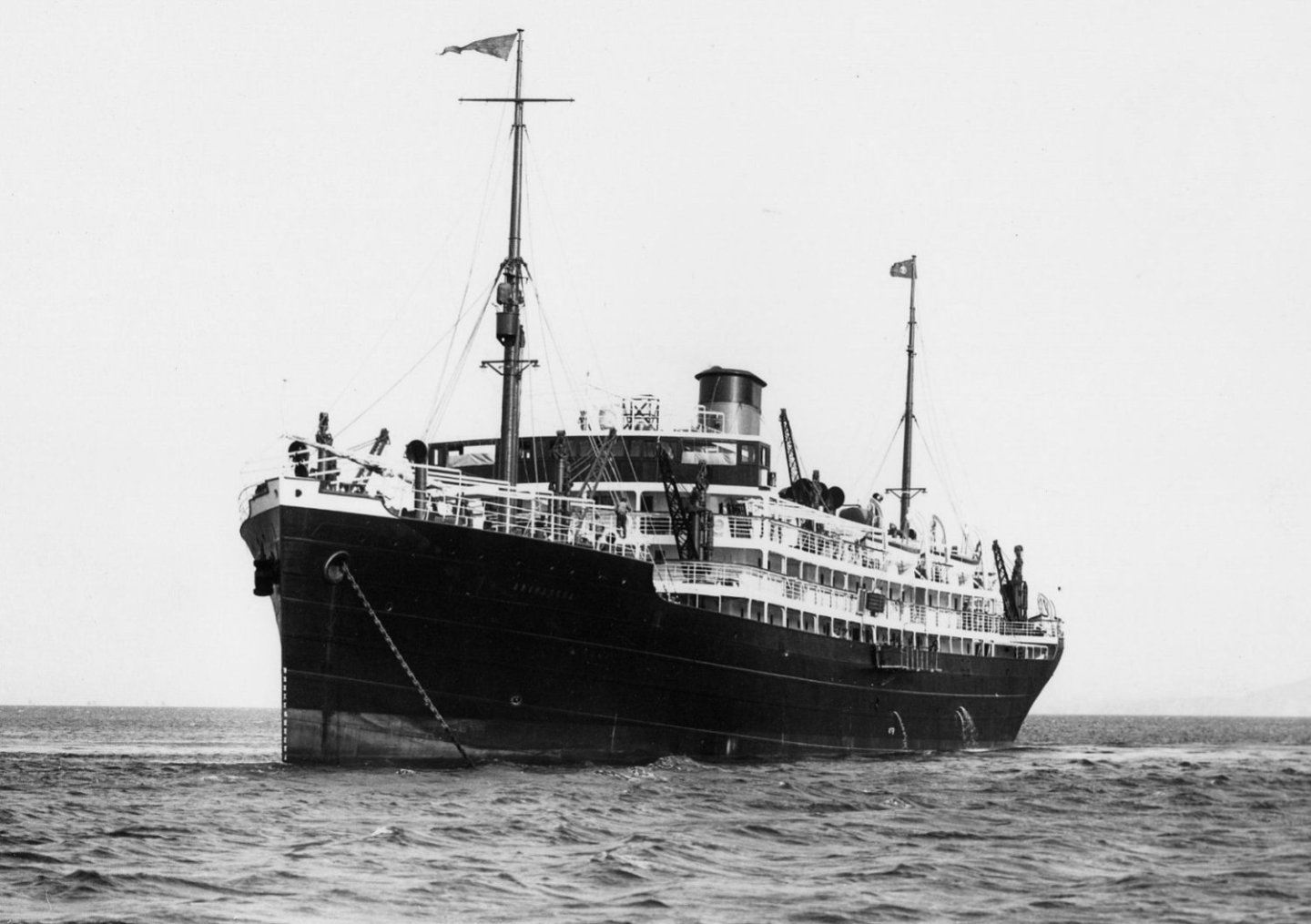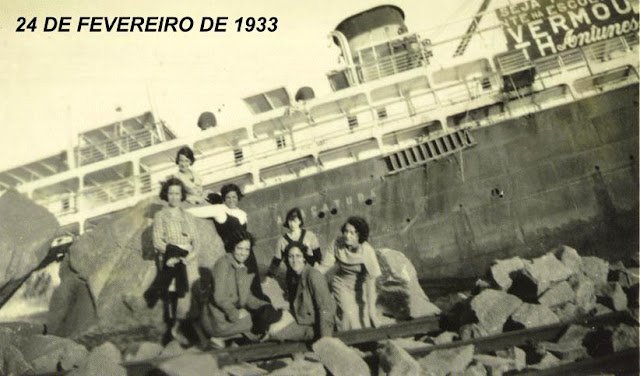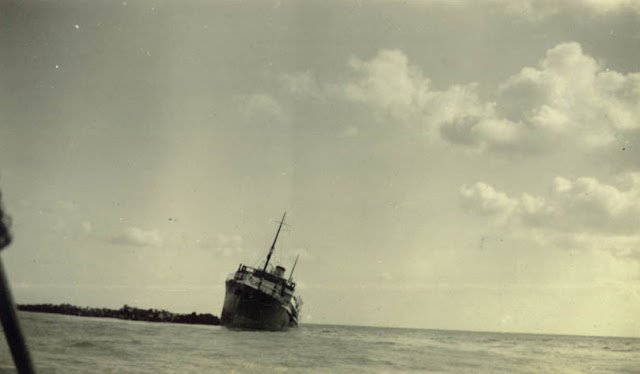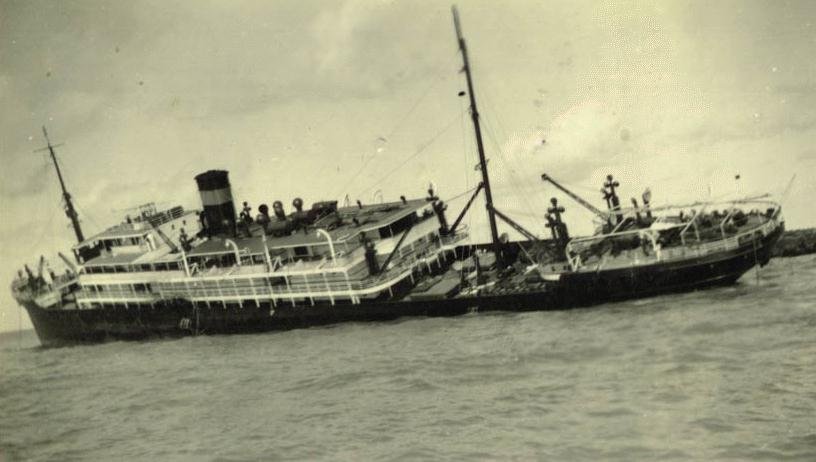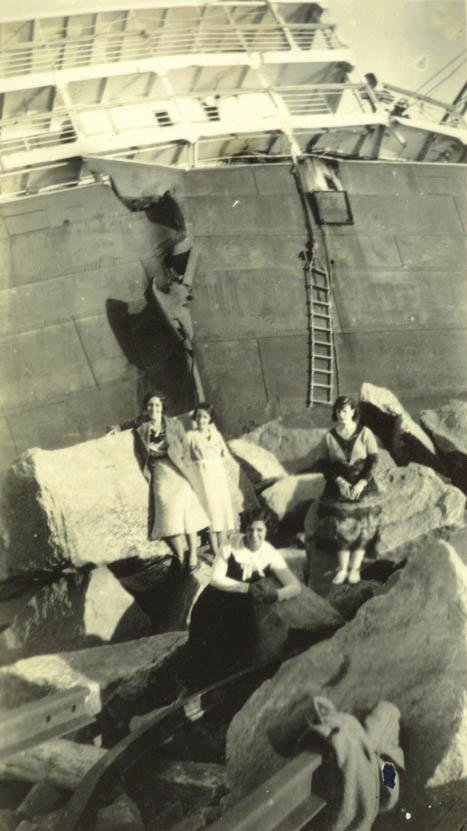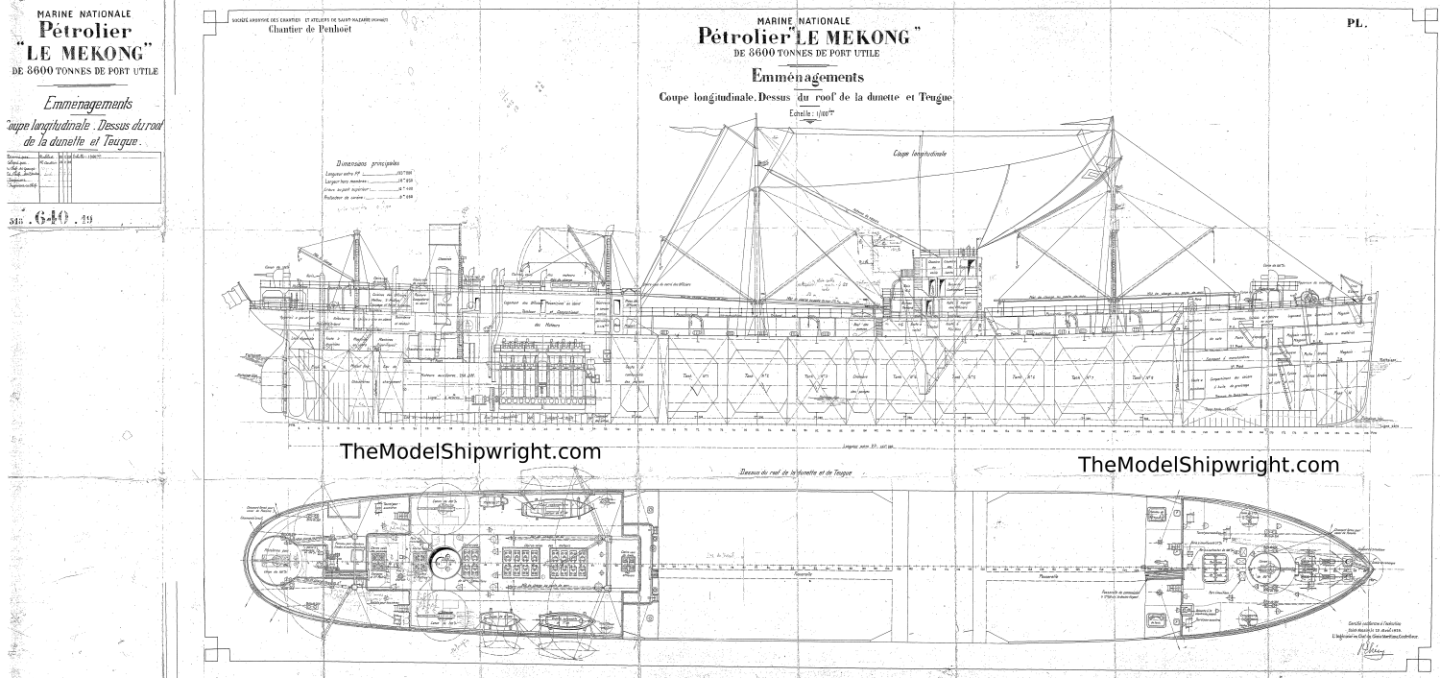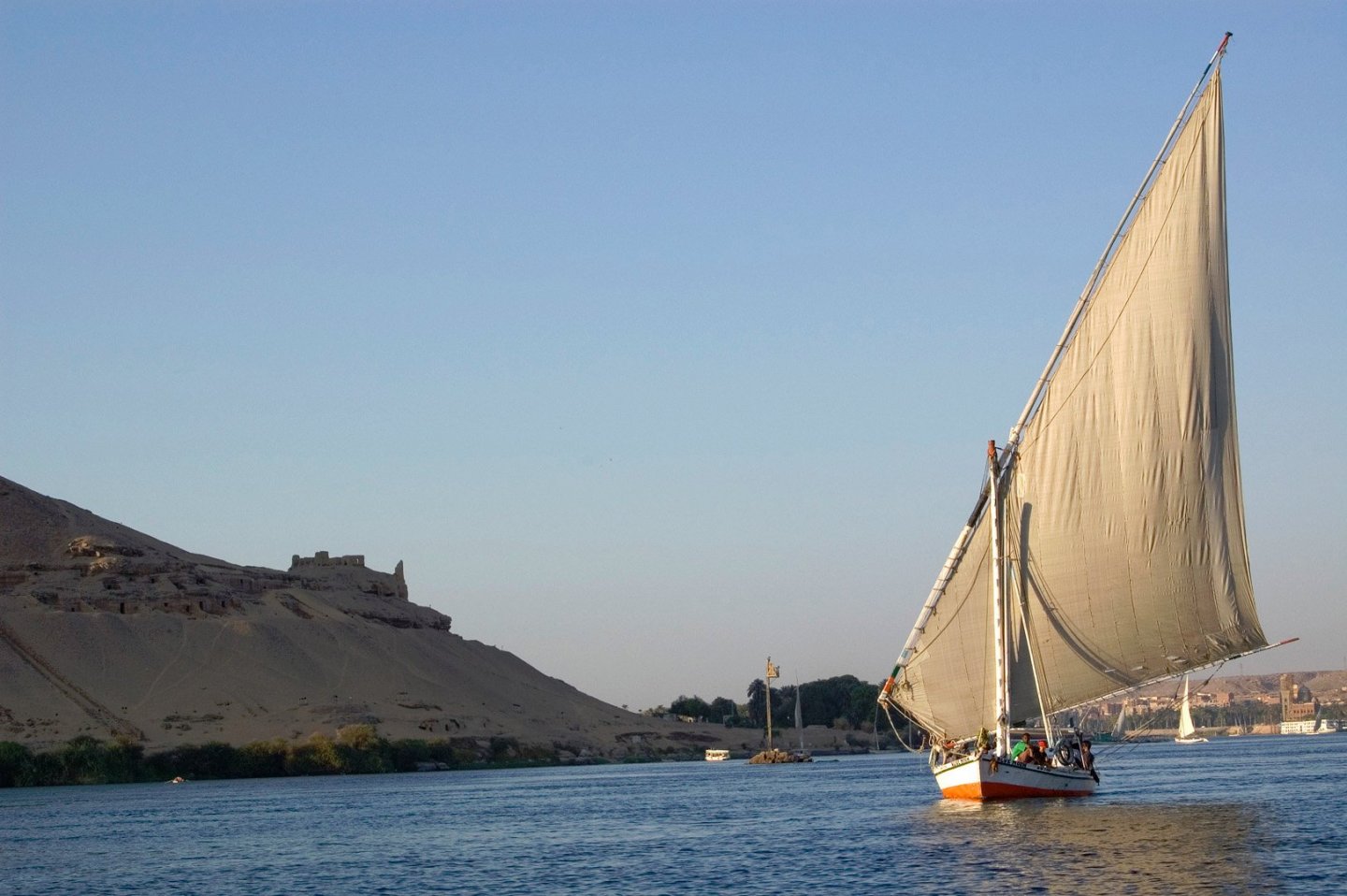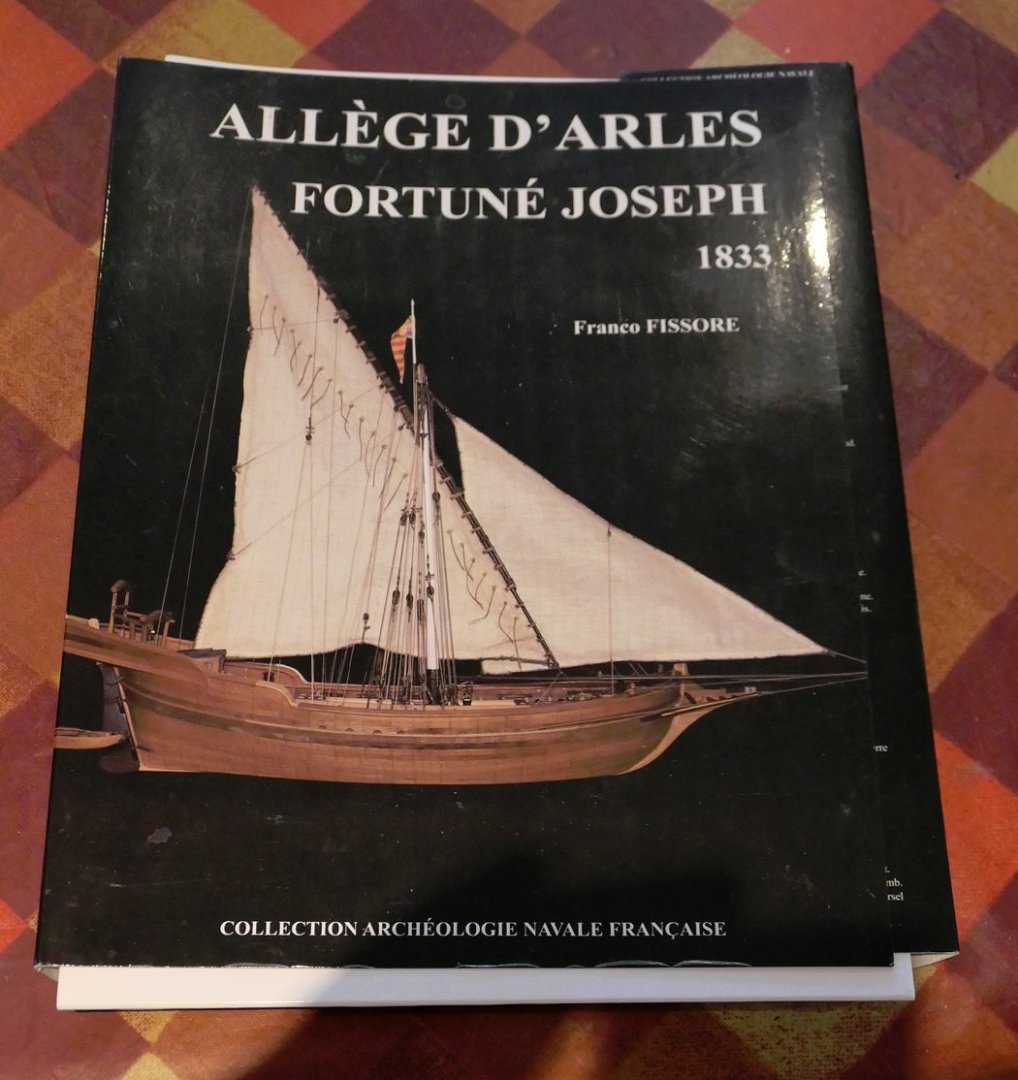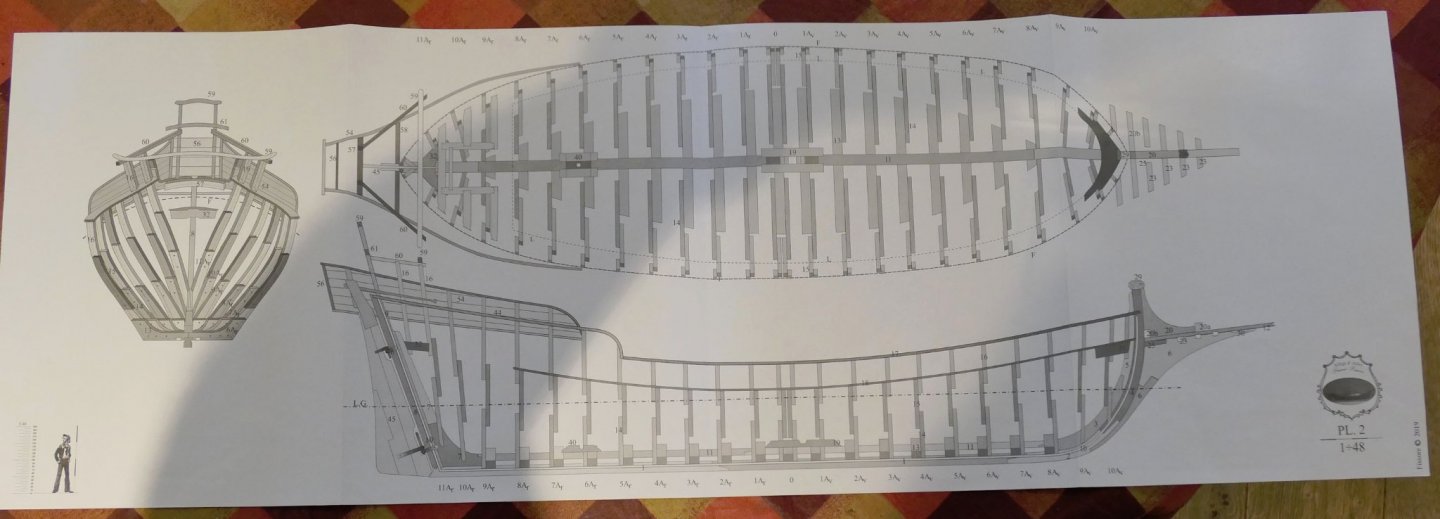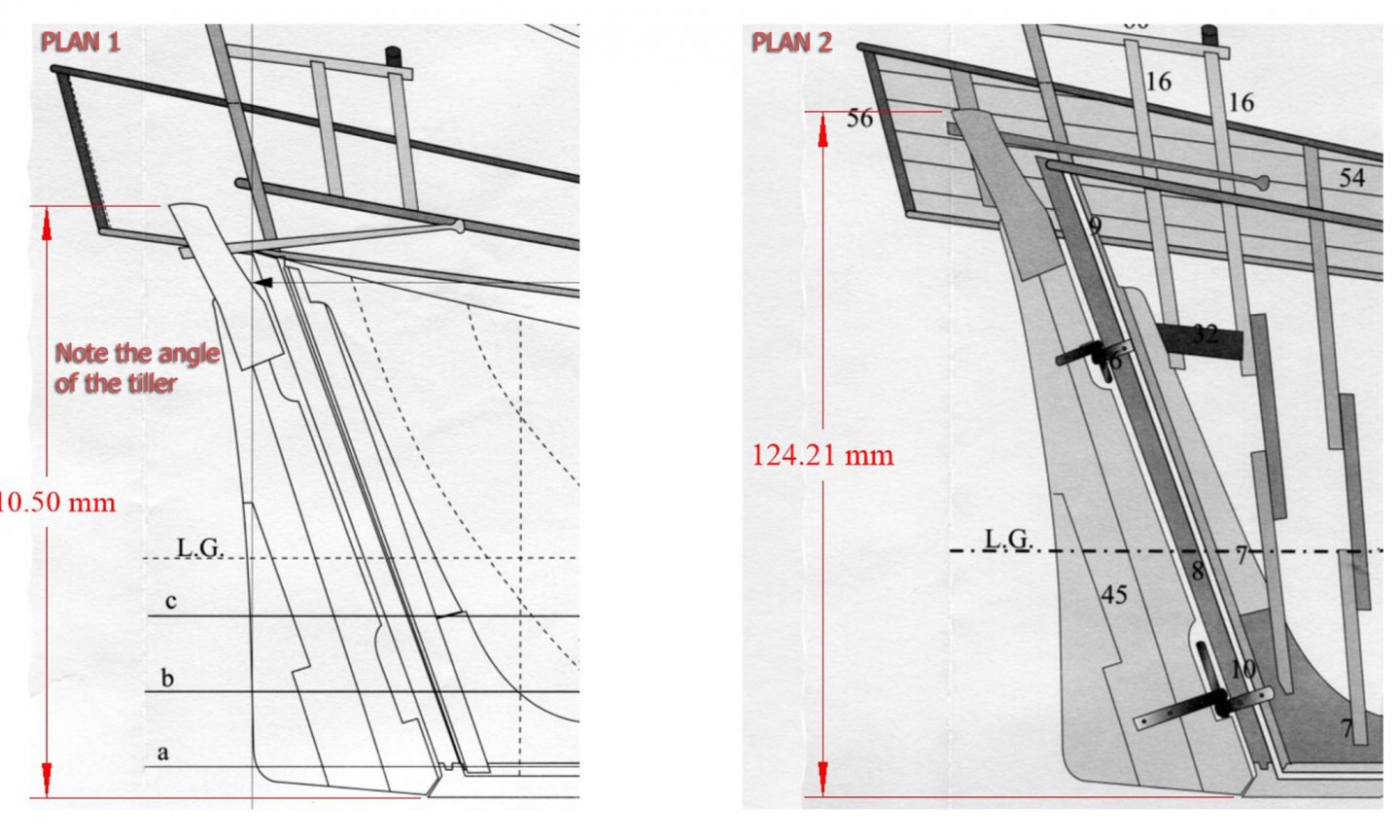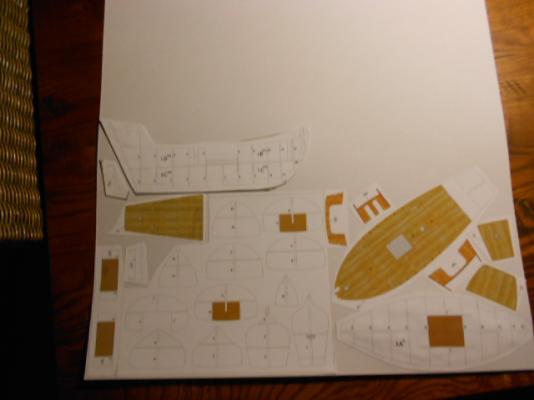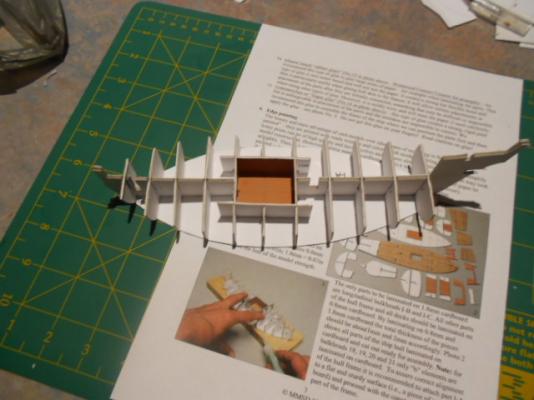Search the Community
Showing results for tags '1:100'.
-
I guess we’ll find out if this forum has the patience for another Heller 1/100 Soleil Royal build log. This one will be focusing on changes, mods, upgrades, additions, styrene-bashing, and general mess-making in pursuit of something just a little different from the boxtop. Hello modelers—my name is John. I’m a lifelong plastic model kit enthusiast who never builds anything according to instructions. I first saw Heller’s 1/100 Soleil Royal when, as a commercial art student, I worked for a short time at Revell in Venice, CA, airbrushing backgrounds for box cover art. It was around 1978–79. One of the big shots had the unbuilt Heller kit opened on his desk. I was gobsmacked, and vowed to build the kit one day. Unfortunately, display space at home was scarce, and I knew that the model wouldn’t survive the irregularities and frequent moves of a twentysomething punk’s lifestyle. I kept putting off getting the kit until things got settled a bit. Now, 45 years later, I figure it’s now or never. In the half-century the kit’s been in production, it’s been controversial, an inspiration for a lot of palaver and condemnation. For a supposed “scale” model, there’s a lot that’s questionable about it, and if you aren’t familiar with the shortcomings, it’s because you haven’t read the other Soleil Royal build logs yet. However, the more I read and the more knowledge I picked up, the better this kit looked. I decided I could build an attractive representation of one of Louis XIV’s premier rang (first rate) ships-of-the-line from this kit. It would be impressive, if not wholly accurate. Many features would be exaggerated, but I’ve never had a problem with a certain degree of caricature modeling in small scales. I’m not a fine-scale modeler. I’m familiar with all the compromises accepted in other categories of modeling. Why not ships? Besides, I had decided my Soleil Royal would look different from the usual. I love to add stuff and change the detailing on kits. I haven’t found a kit yet I couldn’t customize. Here’s what I started with in November, 2022. The kit is beautiful, well-detailed and nearly free of flash and mold lines. State of the art when it was released in 1974. Parts fit well and the few large pieces that were slightly warped (no kit is perfect) were fixable with a little work. The box was delivered in November. I stared at the pieces for a while and then started reading reference books, websites, and build logs. I learned a lot from other Soleil Royal build logs on this forum and others. I am continually delighted, amazed, and entertained by the work of Marc LaGuardia (Hubac’s Historian) and his correspondents. The work I’ll be showing off here is the direct result of the knowledge they have generously shared. I’m a metaphorical fig newton, standing on the shoulders of giants, or however it goes. I didn’t clip a sprue or squeeze a glue tube until February, but here’s what my project looked like in August, after six months work—finally ready for masts and rigging. (More beauty shots at the end of the post.) I propose to show how I got to this point in weekly posts that will also contain some hopefully-interesting-slash-useful history and background of the ship. There’s a lot of stray information (and disinformation) about this ship floating around, and I’m going to try and assemble all the important bits in one place. The prototype was a remarkable work of Baroque art as well as a weapon of war. A floating castle of death-dealing artillery decorated by the same artistes who built and filigreed the palace of Versailles. The dichotomy is delicious. SO WHAT IS BEHIND HELLER’S KIT? The model is patterned after an 1837 wooden ship model in Paris’s Musée National de la Marine, made by the skilled ship modelmaker Jean-Baptiste Tanneron. You’ll be hearing about the Tanneron model a lot. Copying it was a logical thing for the Heller mold-crafters to do, since it was the only well-known detailed representation of the Soleil Royal from historic times. One of the first things I did was tape together half the hull and propped it up to make a comparison photo. But copying the Tanneron model brought Heller problems. The first is the true identity of the ship. There were three ships built in Louis XIV’s time named Soleil Royal. The first was built in 1668–70. Hereafter, I’ll call that one Soleil Royal I. The second was a from-the-keel-up rebuild of the first ship in 1688–90. That’s Soleil Royal I(a). The third was a new ship built in 1692–93, Soleil Royal II. All three were 100+-gun premier rang three-decker royal flagships, extravagantly ornamented to reflect the glory of Louis XIV, le Roi Soleil, the Sun King. The Musée de la Marine is noncommittal about which ship Tanneron’s model represents. According to Heller’s literature, the kit represents the first two ships (considered as one), which met its fate in an encounter with an English fire ship in 1692. I’ve come to believe this is the wrong ship. Heller is partially to blame for the confusion, but in their defense, the Heller die-makers working in the early 1970s didn’t have the instant access to books and internet information we enjoy today, and the museum authorities they consulted were apparently not very helpful. The second major problem with the model is that the hull has too shallow a draft. According to surviving records, the 2400-ton 170-foot ship should have a draft of 24 feet. The Tanneron and Heller models—nope! Third, to compound the problem, the above-the-waterline dimensions are exaggerated. The gundecks have lots of headroom—eight feet, compared to the six feet on actual 3-decker warships. There would be very few cases of concussion by clumsy gunners going bonk on overhead beams if they sailed on a ship with Tanneron’s dimensions. Here’s the Heller model with a scale line drawing of another ship from the same time period, the Foudroyant: Aaaand… let’s quit there. Let’s not even discuss the height and width of the stern. What was Jean-Baptiste Tanneron thinking? Unfortunately, we can’t ask without a ouija board. It should be noted, however, that before the invention of photography, representations of historical objects in artwork (or sculpture, or modelmaking) weren’t anywhere near modern standards of accuracy. Living in an information-and-photography-saturated society, our attitudes about fidelity to prototypes have evolved a lot. For myself—I think the impression of a tall, castle-like warship is enhanced by Tanneron’s exaggeration of the proportions. And this is no modern interpretation. Have a look at the only eyewitness sketch of one of the Soleil Royals in action. Look how high the exaggerated sheer is in the drawing and compare that to the Tanneron model. Oh yeah! Both artists made this ship big, and high, and a true seagoing fortress. That should be the biggest takeaway from seeing artwork or a model of this leviathan. I think the Tanneron model (and the Heller kit) gets the point across nicely. So in the end, if you choose to build the Heller Soleil Royal, you’re really building a model of a 19th-century model, and it’s a caricature model anyway. For complete intellectual honesty, you should get out your wood-colored paints and wood-grain-duplicating techniques and make the model look as if it were carved from fine hardwoods; a model of Tanneron’s model. That would be a commonsensical approach. Fortunately for me, I have no common sense when it comes to models. I want have fun detailing, painting, and rigging a plastic model ship. Here are more photos of my progress up to August, 2023. Not much gold leaf on my version of the ship. After some reading, I don’t believe there was a great deal of gilding on the prototype. Figuring out what to paint the ship, based on surviving descriptions, old artwork, historical painting practices, and antique models, was a major part of the research. Paint choices and decorations will be discussed in later posts. Deck furniture got changed. Many trips to Ikea. Much time was pi—ah, productively spent—rigging tiny guns and rebuilding tiny boats. Guns were either replaced or rearranged and drilled out to the right calibre. Colorful gunport lids will be installed as soon as I finish the channels and shrouds. 104 guns were mounted, same as the ship had in the period I’m trying to model (very early 1700s). The waterline got raised to squeeze in a few more feet of draft. Quarter galleries got entirely rebuilt to better resemble a surviving historical drawing. I believe that the enclosed “bottle” quarter galleries on late 17th-century French warships had removable panels—whether for weather or for war. I left the upper gundeck balcony open to demonstrate this. Most of the ship’s gilding is up high—out of the way of waves and wear. Wasn’t happy with the too-big kit-supplied figures, plus, I needed a few new ones to match the drawing of the quarter galleries I was referencing, so I sourced new figures from the Shapeways 3D-print marketplace. Figuring out all the ship’s iconography was a deep research rabbit-hole, but a rewarding one. For the curious, the figures on the forward edges of the quarter galleries are Kronos, “father time,” (starboard), and his consort Rhea, mother of the Olympian gods (port). The other two figures are replacements for the kit’s too-large allegorical figures of America (port, with feathers) and Africa (starboard, with elephant-head headdress). The figures were “dressed” with additional sheet styrene. Next week we’ll get the project going by seeing what mods and additions were made to the hull, plus background on the three Soleil Royals and the whys behind which one I’m modeling. I invite discussion in the meantime. Happy modeling 'till then!
- 80 replies
-
- Soleil Royal
- Ship-of-the-line
-
(and 2 more)
Tagged with:
-
Hello everyone, After some years of lurking, I've finally created an account as I'm about to start a project that might be interesting. I'm from Brazil and have always been interested in maritime history and scale modeling in general, recently I've made a very interesting discovery. There was a passenger ship named after my hometown, Araraquara, located in southeastern Brazil. This ship was built by Cantiere Navale Trestrino in Italy, 1927, it was part of the Ararangua Class, comprising of 9 total sister ships bought by Lloyd Nacional in the late 20s. After serving for 14 years with Lloyd it was sunk by U-507, a Type IXC U-boat, who inexplicably sunk several neutral ships around the Brazilian coast in a matter of days. "The first was the Brazilian Baependy on 16 August, which was torpedoed and sunk with 270 civilian lives. A few hours later the Araraquara was sunk, killing 131 people, followed by the Annibal Benevolo, on which 150 civilians drowned. The next day the slaughter continued, the Itagiba sunk within sight of the city of Valença, killing 36, and the Arara similarly sunk with 20 deaths as she picked up the survivors of the Itagiba. Two days after this, the tiny sailing vessel Jacyra was sunk, and a Swedish ship was torpedoed three days after that. In just one week, U-507 had sunk seven ships of 18,131 GRT and killed over 600 people, all of them neutral civilians." https://en.wikipedia.org/wiki/German_submarine_U-507 The sinking of these Brazilian ships was the central factor for our involvement in the war. Baependy was the first one sunk, with 306 passengers onboard, and the Araraquara was sunk just a few hours latter, killing 131 people. The Araraquara was 115 meters long(about 380 feet), 16 meters wide(~50 feet) and had 4870 gross register tons. Besides being named after my city of origin and being part of one of the most tragic and important moments of our maritime history, this vessel had very good looking lines and was small enough to be modeled comfortably in 1:100, a scale I've always wanted to work in. So this looked like a good project to go after. I have some friends on the local historic heritage committee, and I'll be proposing to them the inclusion of a section on this ship and its tragedy in our local museum, so a scale model of it would go together well. The problem is, other than the images on wikipedia and a few other websites, there was really no information on it that could be found online. All this photographs are in very low resolution and have been posted years ago, so trying to contact however digitized them for original prints would be a challenge. I was lucky enough that someone included on wikipedia a picture from a 1927 german magazine on maritime engineering who covered the ship, including a scaled side cross-section view of the ship, at least I'm not starting from nothing: My first bet was contacting the shipyard who built it, it was bought in the 1980s by Fincantiere, and as e-mailing is free, there was no reasong not to try. It would be very unlikely that I could get a set of plans this way, but I've given it a shot. After a few days I got an answer confirming that this ship was indeed built by them and although they didn't have any technical drawings of it archived, they've sent me this beautiful picture of the ship, in high resolution(courtesy of FINCANTIERI S.p.A. - All rights reserved): After seeing this image my fate was sealed, I had to build it, it was a beautiful vessel. I have also found pictures of her sister ship Araçatuba, named after another city nearby, who was scrapped after hitting rocks on the coast of Brazil in 1933, although this pictures are also in low resolution, their angles are helpful to determine some of the shapes and details of the ship: Considering this is a project without plans, only photographs and a single cross-section view, I'm working now on collecting photographs and plans of similar ships so I can create a mosaic from a lot of different sources, hopefully gathering enough information to create a half-decent representation of the ship. Right now the best easy online "match" I've found for plans is from the Le Mekong, a french cargo ship from 1928 that was around 10% longer than the Araraquara, and generally seems to have very similar hull lines and superstructure equipment. So my first step was loading these plans and the Araraquara cross section on CAD so I could draft around it having a better idea of how good of a match this is: Here he wave our plans laid on cad to be traced over: And here we have in RED the outline of the Araraquara hull and in GREEN the outline of the Le Mekong hull scaled down proportionally to the length of the Araraquara: As we can see, I believe this is a good match, the forecastle is proportionally about the same length both hulls are about the same height, and only the aftercastle is longer on the Mekong. Being that the general lines seem to be similar on the Le Mekong, so I believe this is my best course of action for now. I'll keep looking for plans(any tips are welcome), the ideal would be to find plans for a passenger ship of the same tonnage built around the same time in Italy, but we work with what we got. My first step will be modeling the hull of the Le Mekong on Blender to compare it with the hull of the Araraquara and the Araçatuba seem on the pictures, take note of eventual differences and correct after that, ideally to get as close as possible to the hull shape we see on the photographs inside blender before actually making a definitive set of plans for the Araraquara. Thanks for reading! I hope I finish this one, it will take a while!
- 15 replies
-
- 1:100
- passenger liner
-
(and 1 more)
Tagged with:
-
INTRODUCTION & RATIONALE I was given the Ancre monograph of the Fortuné Joseph, an Allège d’Arles (the English translation), and, as I was wondering what next to build, this looked like a good possibility. There were lots of variation to these allèges, or lighters, in the 19th Century, but all had in common their lateen rig and general shape. Ever since being taken on an Arab felucca on the Nile (the one in my picture below), I have been intrigued by the lateen rig. I haven’t been able to find any plans or construction details of a Nile felucca (if anyone knows of any, please do advise me), but this Mediterranean version seemed near enough and I liked the lines – so I decided to jump in and try my hand at a build. I have treated my previous builds as a kind of enjoyable apprenticeship, learning the different ways of approaching builds, experimenting with wood and card, understanding the various types of tool that can be used, and getting to grips with plans and CAD. In particular, I have tried to figure out what aspect of model-making interested me most: the type of model, the historical research, the level of detail, the level of skill, the level of accuracy, the general image, the balance between thinking and practical building, the presentation of the model when finished. My first realisation was two-fold: I am far more interested in working or merchant craft than in warships, and completion of the model holds very little interest for me. I simply don’t know what to do with the completed models, other than give them away. The second realisation was that, partly because of my lack of interest in the completed model, and partly because I have nowhere to place them when finished, I would like to explore the creation of small-scale models. I had seen Javier Baron’s 1:200 build of the Allège, and thought that that scale would be an ultimate aim for me, but for the moment I thought I’d focus on a similarly large scale. After seeing kondzik’s build of the card kit of the Allège d’Arles published by WAK, I bought the card kit and built it just as far as the completion of the hull and its planking. This kit seems to be very similar to the allège in the Ancre monograph (although there are lots of differences – such as the dimensions of the quarterdeck) so this would give me not only a good idea of the overall lines and problems that might have to be overcome, but also an insight into the use of card to scratch build a hull. I had had the idea of building hull bulwarks just with card and finishing the rest of a model with wood, as I’d seen someone do that with a Shipyard card kit of the Alert. At first I wasn’t going to make this into a log for a model forum since it really was an experiment just to explore the possibilities as I will explain further on. However, I decided in the end that there may be enough interest in reflections on the Ancre publication to justify a log of my build that is definitely full of mistakes, and a rather ramshackle construction and finish. For these I apologise. The build of the card kit also gave me a little experience with using filler on a card model to provide a good surface for the planking, as so many card modellers have said that without filler it is quite difficult to avoid depressions in the curve of the hull. I followed Ab Hoving’s suggestion of a standard water-based filler. THE PLANS Unfortunately, the monograph and plans drawn by F. Fissore of the allège (as others have noted with builds of the Gemma and S.Caterina) do not match the excellence and comprehensive nature of the monographs from other authors published by Ancre such as Jean Boudriot and Gérard Delacroix. Thus this monograph has a very different approach: the usual detailed analysis of the plans in the monograph is instead merely a list of the parts shown in each plan, there are no scantlings provided for any parts or rigging (we are not even given the dimensions of the keel), and the guide to the building of the boat is almost entirely in photographs of the author’s build (most of which are very small, of poor resolution and thus hard to demonstrate detail). This approach might not be so worrisome to those used to working from plans. It should also be pointed out that the section on rigging is good, especially given the fact that each aspect of the rigging is given its own illustration in the manner of Lennarth Petersson, and this will be discussed later. Another big plus is that the plans are laid out on long pages whose height is that of an A4 page in portrait mode – making it easy to photocopy and then stitch the pages together. [The dimensions of this photo have been modified to avoid replication.] However these positive aspects are offset by lots of errors in both monograph and plans which need correction. My first realisation of problems with the plans came when I compared Plan 1 with Plan 2. They showed the rudder and tiller entirely differently as follows: In this instance, Ancre immediately responded to my request for clarification and they sent me a pdf of a revised Plan 1 which corrected this anomaly – Plan 2 showing the correct dimensions. The anomaly made me study the monograph more intensely in case there were further problems which I needed to bring to the attention of Ancre. I soon found lots. There are four main types of problem: 1. The plans are inconsistent with the method of building shown in the photos of the monograph. (a) There are many details in the photos of the actual build which are not shown in the plans. This led to my having to undo some of the work I had done when I finally spotted the often important detail. One of the many examples is that there are inconsistencies about the number of beams running under the bowsprit fore timbers. (b) Less importantly, the plans show the frame top timbers extending to the top rails throughout, but the pictures of the build showing the method of construction show the frames ending beneath the lower waterway with the timberheads being constructed separately and fitted into square holes in the waterways and rails. The confusion is worsened by the fact that the plans of the frames themselves do not show the position of the ends of the top timbers at all accurately. Of course, once this is understood, the experienced modeller will be able to adapt their thinking and modify the plans accordingly, but it is at first very confusing when comparing photographs with the plans. 2. The second type of problem is that the plans of the frames are incorrectly drawn, especially in Plan 4 of the frames which shows the floors of each frame extending only to the top of the keel rather than to the top edge of the rabbet. Once this has been spotted by the modeller who has been careful to examine the measurements this again will not be a problem. The base of the floors has simply to be extended by a few millimetres (depending on the scale that will be used). 3. The third type of problem is that of inconsistency between the plans. Thus in some the waterways are shown correctly, and in others they are simply not there. There are many other similar discrepancies. 4. A fourth, more irritating problem, is that the numbers on several of the plans do not match the text of the monograph, nor are they consistent on different pages of the monograph. On some of the plans the numbers are duplicated, with different parts having the same number, on some the parts are given the incorrect names (e.g. a rudder blade is given the same number as a top rail; the keel and the sternpost are both referred to as the sternpost); and some parts are given no reference at all. Some of these difficulties may possibly be due to the very poor translation into English (some pages are not translated at all from French, which is itself a translation of the original Italian) but obviously the experienced modeller will be able to manage once aware of the difficulties. All of these are a great pity as excellent models of the Gemma and S.Caterina (both plans by Fissore) have been built (although they do mention but do not detail the difficulties they faced with the plans), and the ships themselves have great attraction. M.Fissore himself shows photos of the builds of his various models including his own of the allège (at Archeologia e Modellismo d'Arsenal) and it is well worth the visit as the photos there are far, far clearer than in the book). I have written a fairly detailed list of these various problems and submitted them to Ancre for consideration by M. Fissore, so it may be that future editions of these plans and monograph will be made more amenable for a wider range of modellers. A very similar boat, La Diligente, which was a lateen Navy messenger boat of the 1750s, whose monograph is published by Ancre and written by Gérard Delacroix & Hubert Berti, has the same level of complexity but is not only incredibly detailed and thorough together with complete scantlings: it also provides a set of plans that will allow the less experienced modeller to make it POB rather than POF. In the interim, as long as one is aware of the problems with plans and monograph, the experienced modeller will be able to use the correct body, sheer and breadth plans on a corrected Plan 1 as the basis for their model. I'll be adding stages of the build over the next few weeks, so I hope it will be of interest. As usual, don't hold your breath! Tony
- 41 replies
-
- Finished
- Allège d’Arles
-
(and 5 more)
Tagged with:
-
i downloaded and started this free model from the Maritime Museum of San Diego to see how it is building in card first some of the parts needed to be on 1mm and 2 mm thick cardboard upper hull structure assmebled
- 12 replies
-
- San Salvador
- card
-
(and 1 more)
Tagged with:
About us
Modelshipworld - Advancing Ship Modeling through Research
SSL Secured
Your security is important for us so this Website is SSL-Secured
NRG Mailing Address
Nautical Research Guild
237 South Lincoln Street
Westmont IL, 60559-1917
Model Ship World ® and the MSW logo are Registered Trademarks, and belong to the Nautical Research Guild (United States Patent and Trademark Office: No. 6,929,264 & No. 6,929,274, registered Dec. 20, 2022)
Helpful Links
About the NRG
If you enjoy building ship models that are historically accurate as well as beautiful, then The Nautical Research Guild (NRG) is just right for you.
The Guild is a non-profit educational organization whose mission is to “Advance Ship Modeling Through Research”. We provide support to our members in their efforts to raise the quality of their model ships.
The Nautical Research Guild has published our world-renowned quarterly magazine, The Nautical Research Journal, since 1955. The pages of the Journal are full of articles by accomplished ship modelers who show you how they create those exquisite details on their models, and by maritime historians who show you the correct details to build. The Journal is available in both print and digital editions. Go to the NRG web site (www.thenrg.org) to download a complimentary digital copy of the Journal. The NRG also publishes plan sets, books and compilations of back issues of the Journal and the former Ships in Scale and Model Ship Builder magazines.

